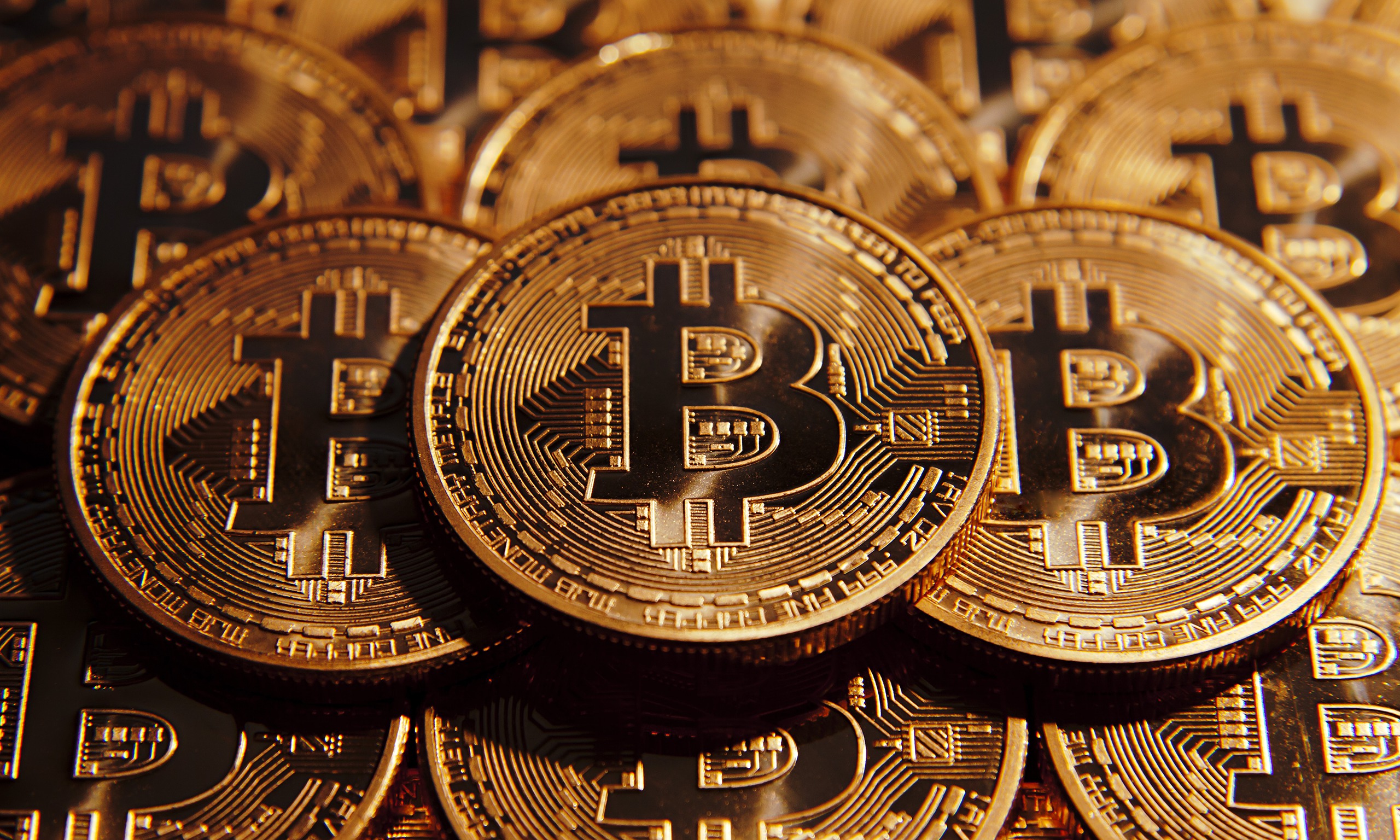Bitcoin is a worldwide cryptocurrency and digital payment system called the first decentralized digital currency
Bitcoin is a worldwide cryptocurrency and digital payment system called the first decentralized digital currency, as the system works without a central repository or single administrator. It was invented by an unknown person or group of people under the name Satoshi Nakamoto and released as open-source software in 2009.[11] The system is peer-to-peer, and transactions take place between users directly, without an intermediary. These transactions are verified by network nodes and recorded in a public distributed ledger called a blockchain.
Bitcoins are created as a reward for a process known as mining. They can be exchanged for other currencies, products, and services. As of February 2015, over 100,000 merchants and vendors accepted bitcoin as payment. Bitcoin can also be held as an investment. According to research produced by Cambridge University in 2017, there are 2.9 to 5.8 million unique users using a cryptocurrency wallet, most of them using bitcoin.
Main article: History of bitcoin
On 18 August 2008, the domain name bitcoin.org was registered. In November that year, a link to a paper authored by Satoshi Nakamoto titled Bitcoin: A Peer-to-Peer Electronic Cash System was posted to a cryptography mailing list. Nakamoto implemented the bitcoin software as open source code and released it in January 2009. The identity of Nakamoto remains unknown, though many have claimed to know it.
In January 2009, the bitcoin network came into existence after Satoshi Nakamoto mined the first ever block on the chain, known as the genesis block, for a reward of 50 bitcoins. Embedded in the coinbase of this block was the following text:
The Times 03/Jan/2009 Chancellor on brink of second bailout for banks.
One of the first supporters, adopters, and contributors to bitcoin was the receiver of the first bitcoin transaction, programmer Hal Finney. Finney downloaded the bitcoin software the day it was released, and received 10 bitcoins from Nakamoto in the world's first bitcoin transaction. Other early supporters were Wei Dai, creator of bitcoin predecessor b-money, and Nick Szabo, creator of bitcoin predecessor bit gold.
In the early days, Nakamoto is estimated to have mined 1 million bitcoins. Before disappearing from any involvement in bitcoin, Nakamoto in a sense handed over the reins to developer Gavin Andresen, who then became the bitcoin lead developer at the Bitcoin Foundation, the 'anarchic' bitcoin community's closest thing to an official public face.
The value of the first bitcoin transactions were negotiated by individuals on the bitcointalk forums with one notable transaction of 10,000 BTC used to indirectly purchase two pizzas delivered by Papa John's.
On 6 August 2010, a major vulnerability in the bitcoin protocol was spotted. Transactions were not properly verified before they were included in the blockchain, which let users bypass bitcoin's economic restrictions and create an indefinite number of bitcoins. On 15 August, the vulnerability was exploited; over 184 billion bitcoins were generated in a single transaction, and sent to two addresses on the network. Within hours, the transaction was spotted and erased from the transaction log after the bug was fixed and the network forked to an updated version of the bitcoin protocol.
On 1 August 2017 bitcoin split into two derivative digital currencies, the classic bitcoin (BTC) and a hard fork, Bitcoin Cash (BCH).
